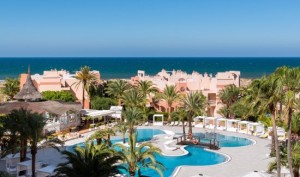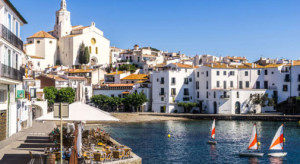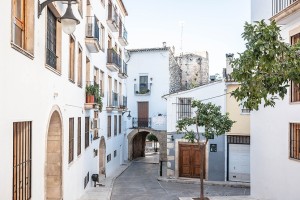Oliva: Spain. To its South lies 10 kilometres (6.2 miles) of coastline and beaches fronting the
Mediterranean Sea and then Denia, and eight kilometres to the North with beaches is then the city of Gandia. The
Passeig (promenade) runs through the centre of the town, and features a market each Friday. On the left side of the Marina beach is Kiko beach. The blue flagged beaches of Oliva stretch for 7 kilometres (4.3 miles); many contain sand dunes. Oliva has one of the provinces biggest and most colourful
Moors and Christians Festivals in the area. In the old town there are two churches, Sant Roc and Santa Maria la Major. Sant Roc dates from the 18th–19th centuries, and Santa Maria from the 17th–18th centuries. At the top of the hill in the old town is Santa Anna Castle, built in the 16th century. People may be seen strolling the Paseig, sampling tapas, drinking coffee or wine and simply relaxing with family and friends. Every Friday there is a market with a plethora of fresh, local produce and wares. Oliva is also a well-known town for cyclists, especially from Estonia. At the beginning of March, they gather there for the spring training camp.
Oliva has a
Mediterranean-Subtropical climate with more than 230 days above 20 °C (68 °F). The winters are mild and temperate whilst summers are hot and dry. The average annual temperature is about 19 °C (66 °F). In winter, during the
cold waves, the minimum temperature can fall slightly under 6 °C (43 °F) Temperatures below the freezing mark and snow are almost unknown in Oliva. Whilst in summer the average day-time temperature ranges from 29 to 34 °C (84 to 93 °F). Temperatures may vary, however during heat waves which occur every year, the temperatures always exceed 39 °C (102.2 °F) and also can exceed 41 °C (105.8 °F). The wettest season is Autumn, while the driest season is Summer. Oliva enjoys many hours of annual sunshine, having more than 300 days in a year with clear skies.





